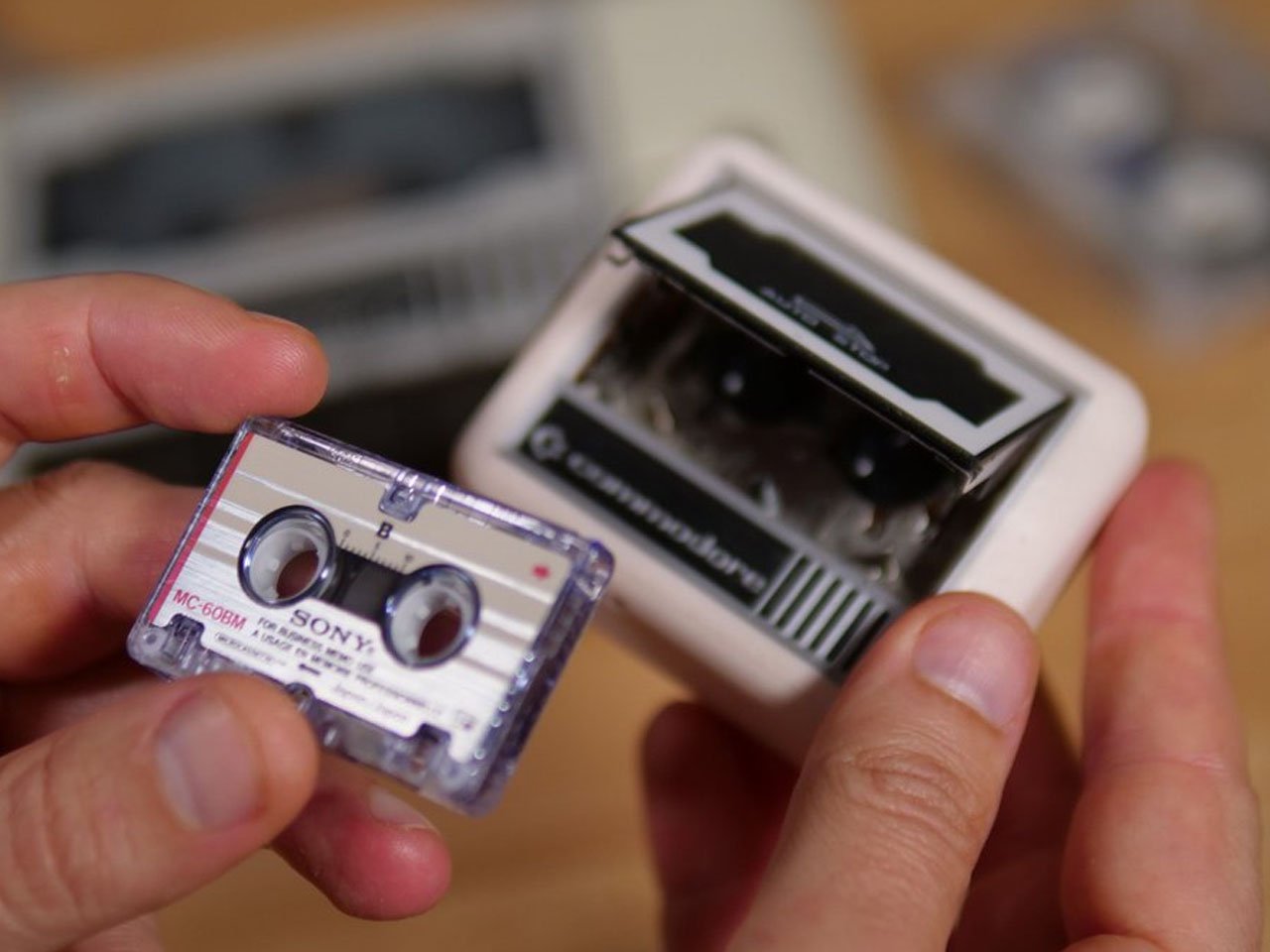In a playful blend of retro nostalgia and modern tinkering, hardware creator bitluni has built a miniature Commodore Datasette, a curious bridge between analog past and digital present. The DIY project began with a discarded microcassette recorder, which is a small dictaphone that already echoed the look of the iconic Commodore peripheral, bigger in size.
Bitluni disassembled it and reworked the mechanics, giving electronic control over play, record, and rewind through a RISC-V CH32V208 microcontroller. The chip’s analog-to-digital interface tapped into the cassette’s speaker, while a custom digital-to-analog converter enabled recording through the mic input. To preserve the classic charm, the parts were housed inside a 3D-printed case styled after the Commodore original, complete with a USB-C port for modern connectivity.
Designer: Bitluni
Early tests used amplitude-shift keying for encoding, but speeds were limited to about 50 bits per second, and decoding was too complex to be practical. Switching to frequency-shift keying, the same method used in the original Commodore 64 cassette decks, boosted transfer speeds nearly tenfold while making the data stream far easier to handle. Despite this improvement, magnetic tape remained fickle. Bitluni devised a workaround by splitting data into 512-byte blocks and writing each block twice. A checksum checked the first block, and if it failed, the duplicate provided a second chance. This doubled the recording time but ensured more reliable playback.
With the system in place, the tiny Datasette successfully loaded Pac-Man, a Commodore-era game with a modest 8 KB ROM, through a serial console. The achievement was less about practicality and more about recreating the ritual of old tape loading. Watching a game crawl in from magnetic tape (this time via USB) captured both the frustration and triumph that once defined home computing.
The project also highlights a broader fascination with revisiting vintage technology. Retro computing has long inspired enthusiasts to reimagine forgotten hardware, whether through emulation, modern rebuilds, or quirky hybrids like this. Bitluni’s creation stands as both a technical proof-of-concept and a cultural commentary, showing how obsolete media can still charm in the age of solid-state storage. He has even shared his code on GitHub, inviting others to build upon the work or simply explore the mechanics behind it. If someone can better his design and add more functionality, it’ll be even better.
This miniature Datasette is less a tool and more a celebration. It reminds us that even outdated formats, once dismissed as slow and unreliable, can spark delight when given new life. By compressing decades of computing history into a playful USB-powered cassette deck, the DIYer demonstrates how far technology has come, and how even its quirkiest relics remain endearing.
The post USB-C mini commodore datasette brings Pac-Man and the 8-bit era back to life first appeared on Yanko Design.

